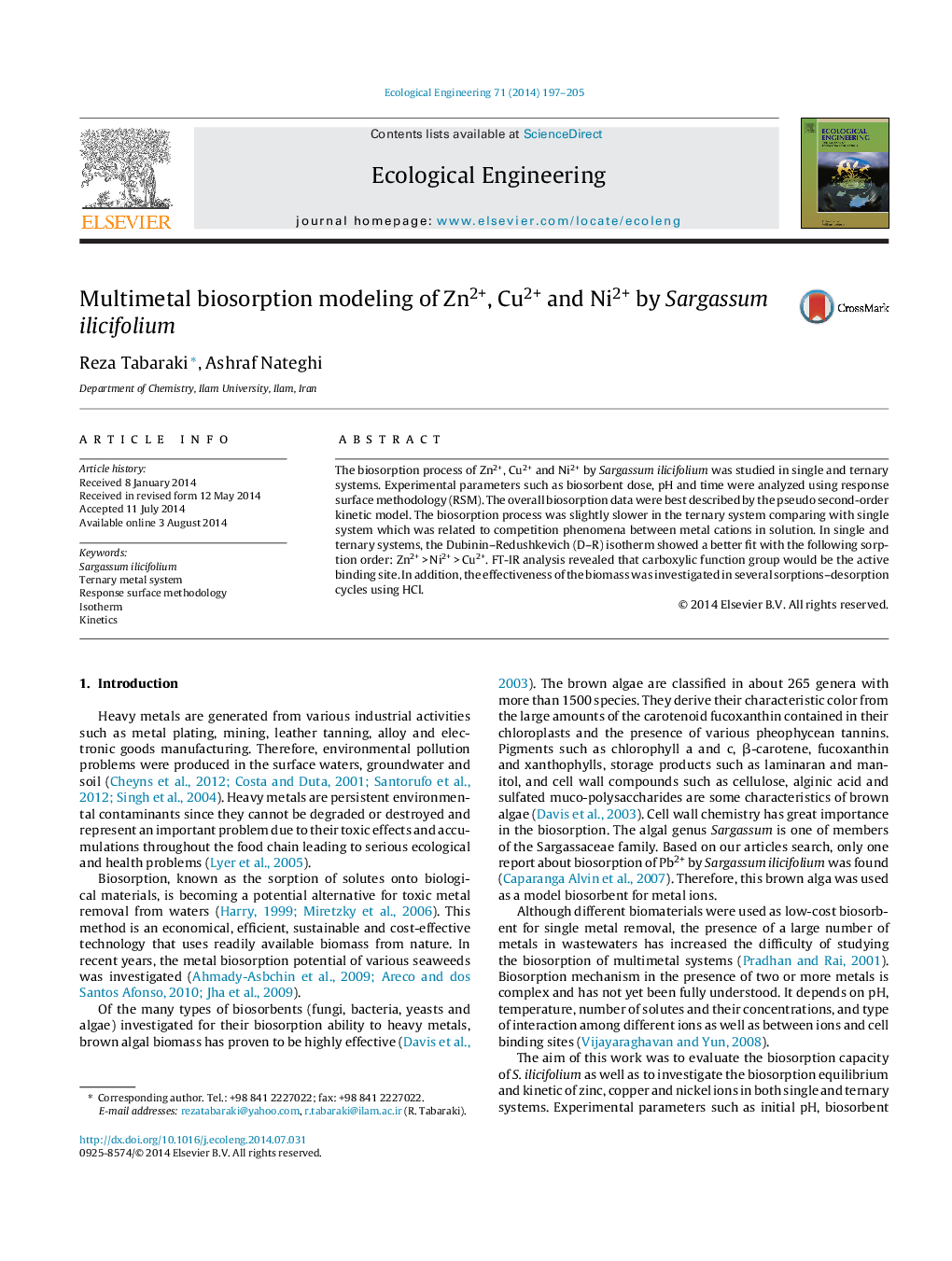| Article ID | Journal | Published Year | Pages | File Type |
|---|---|---|---|---|
| 4389155 | Ecological Engineering | 2014 | 9 Pages |
•Removal of Zn2+, Cu2+ and Ni2+ was studied in single component and ternary systems.•Response surface methodology approach was used to optimize the process variables.•Kinetic and thermodynamic of biosorption in ternary system were studied.•Following sorption order: Zn2+ > Ni2+ > Cu2+ was observed in ternary systems.
The biosorption process of Zn2+, Cu2+ and Ni2+ by Sargassum ilicifolium was studied in single and ternary systems. Experimental parameters such as biosorbent dose, pH and time were analyzed using response surface methodology (RSM). The overall biosorption data were best described by the pseudo second-order kinetic model. The biosorption process was slightly slower in the ternary system comparing with single system which was related to competition phenomena between metal cations in solution. In single and ternary systems, the Dubinin–Redushkevich (D–R) isotherm showed a better fit with the following sorption order: Zn2+ > Ni2+ > Cu2+. FT-IR analysis revealed that carboxylic function group would be the active binding site. In addition, the effectiveness of the biomass was investigated in several sorptions–desorption cycles using HCl.
Graphical abstractRegeneration studies of S. ilicifolium after three cycles.Figure optionsDownload full-size imageDownload as PowerPoint slide
